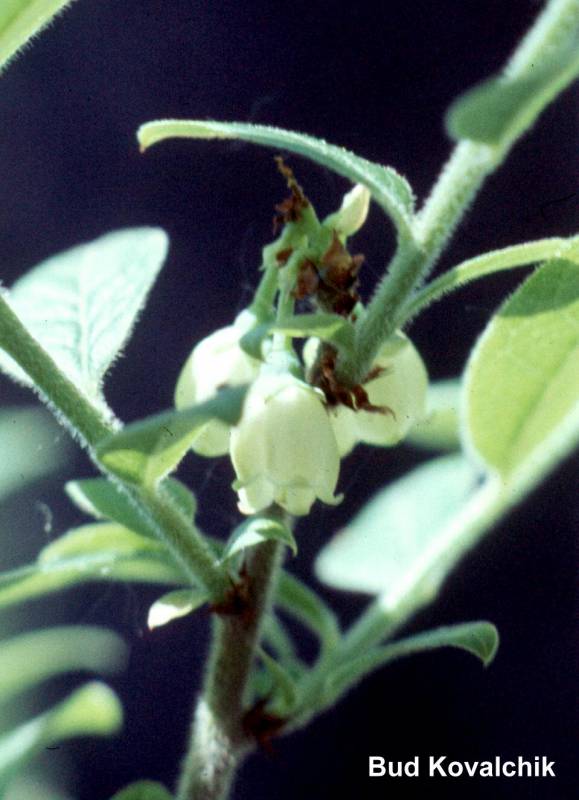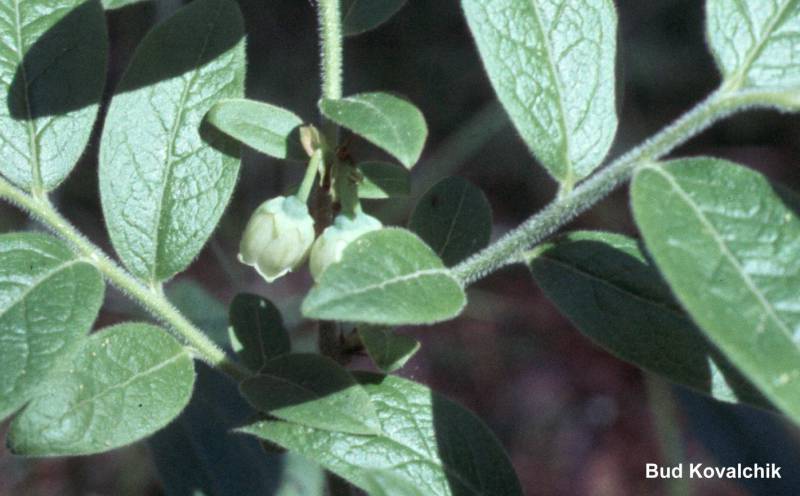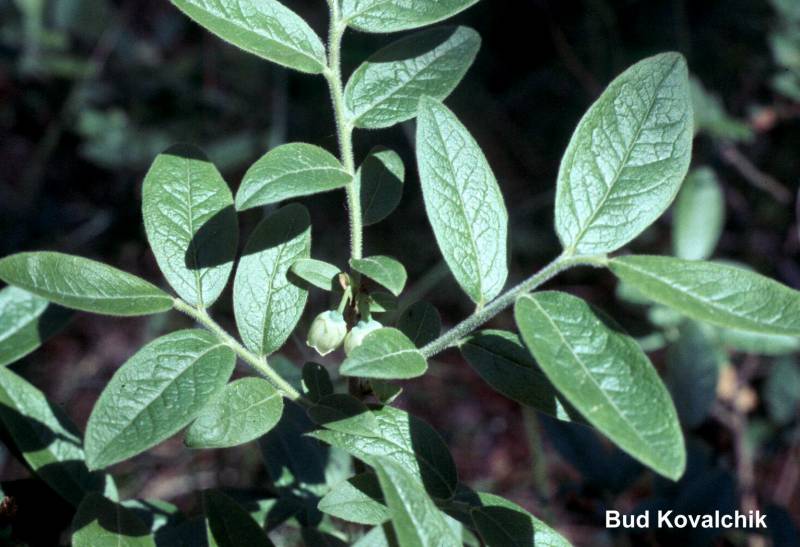Distribution: British Columbia east to Labrador, and in the northern tier of states, Montana to West Virginia; Okanogan County in Washington.
Habitat: Moist forests, peatlands.
Flowers: May-June
Origin: Native
Growth Duration: Perennial
Conservation Status: Threatened in Washington (WANHP)
Pollination: Bumblebees, bees
Deciduous shrubs, forming open colonies, the stems 1-11.5 dm. tall; twigs greenish-brown, terete, hairy.
Leaves alternate, the blades green, elliptic, 23-35 mm. long and 8-16 mm. wide, entire, usually densely hairy, without glands.
Flowers solitary or few in the leaf axils; calyx green, glabrous; corolla urn-shaped, greenish-white to pink, 3-5 mm. long; stamens 10, the filaments hairy; anthers opening by pores; ovary inferior.
Berries blue, 6-8 mm. in diameter, glabrous and glaucous
Publication: Fl. Bor.-Amer. 1: 234. 1803.
Vaccinium angustifolium Aiton var. myrtilloides (Michx.) House
Vaccinium canadense Kalm ex Richardson
PNW Herbaria: Specimen records of Vaccinium myrtilloides in the Consortium of Pacific Northwest Herbaria database
WA Flora Checklist: Vaccinium myrtilloides checklist entry
OregonFlora: Vaccinium myrtilloides information
E-Flora BC: Vaccinium myrtilloides atlas page
CalPhotos: Vaccinium myrtilloides photos







